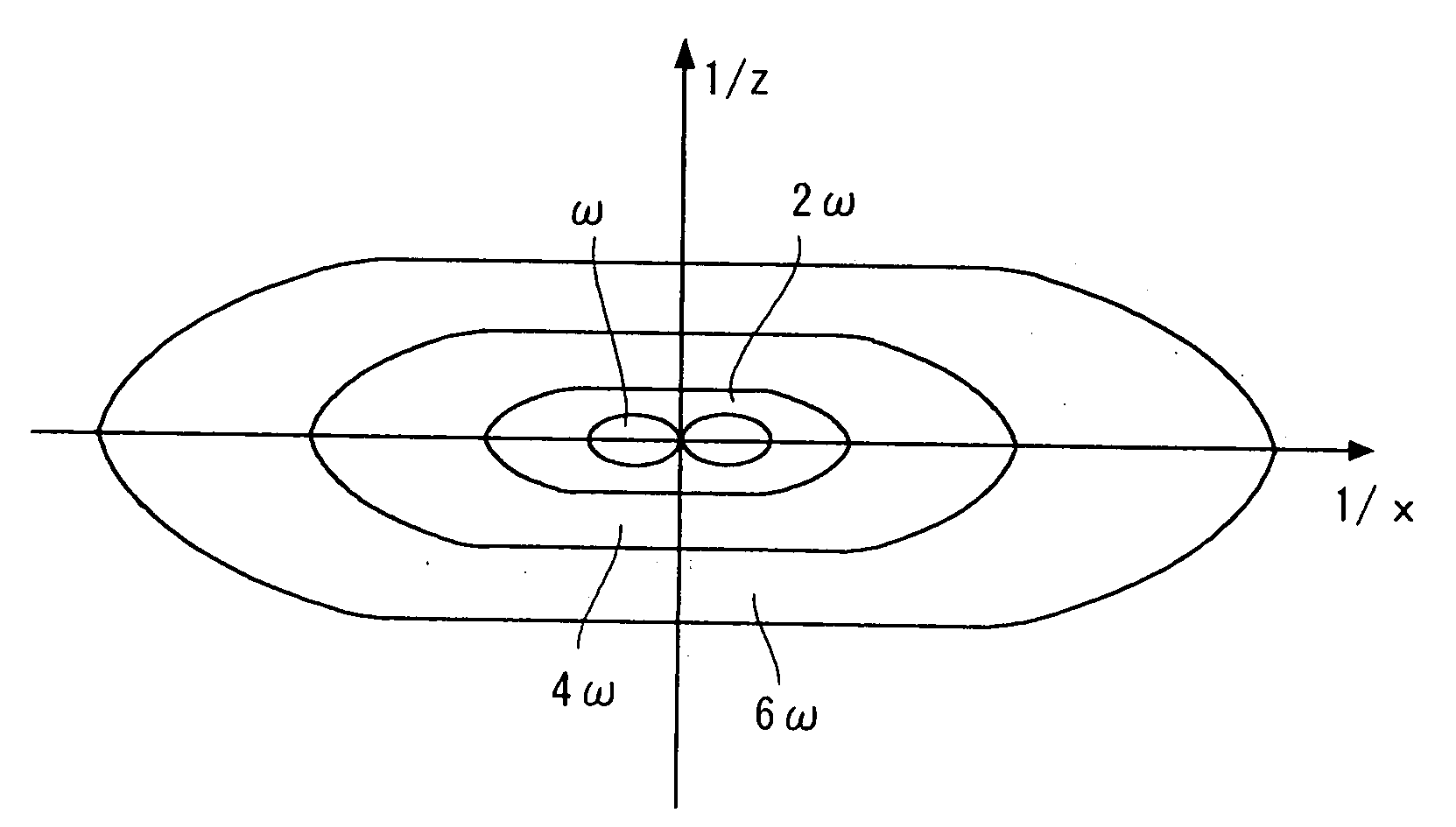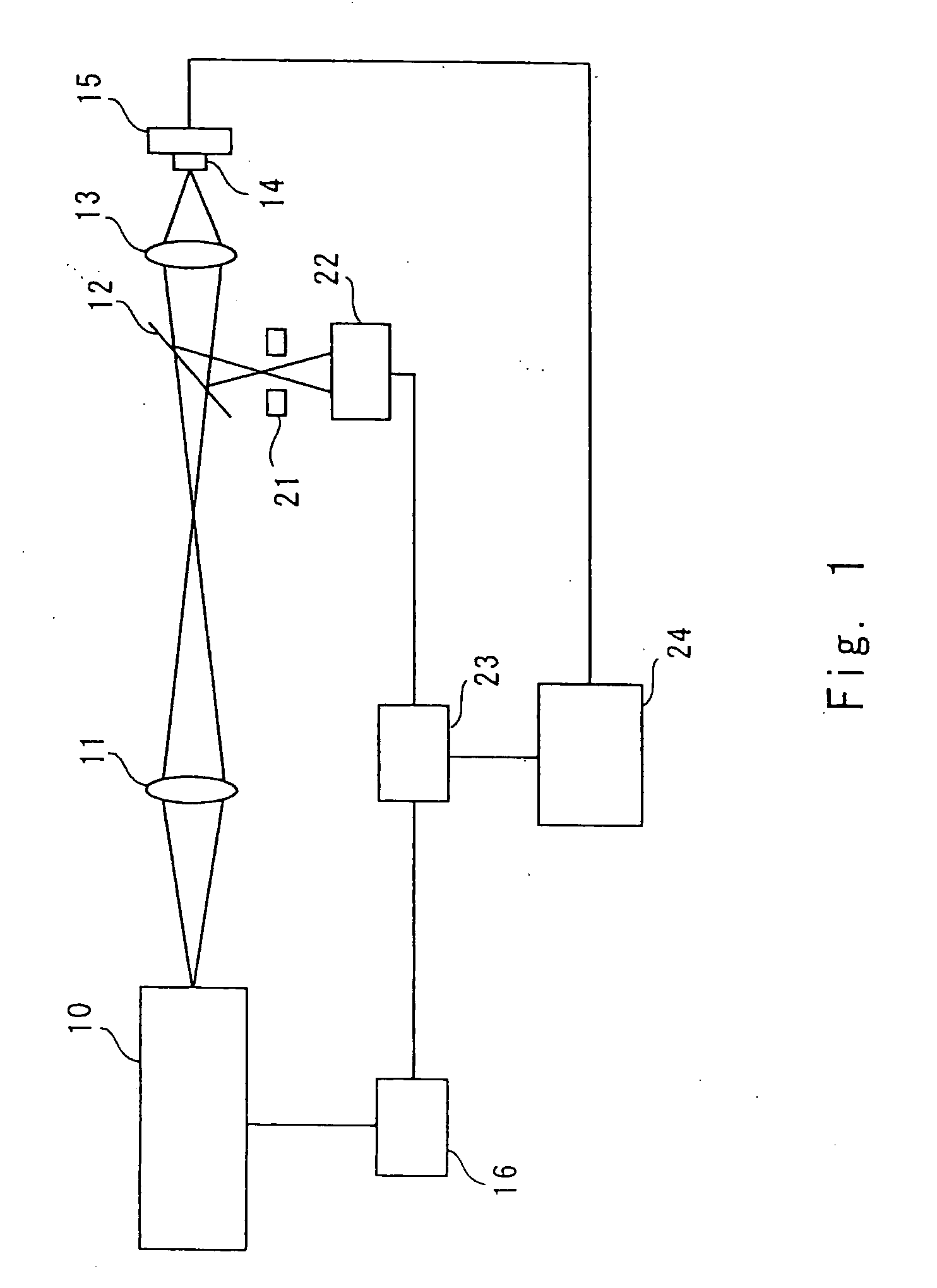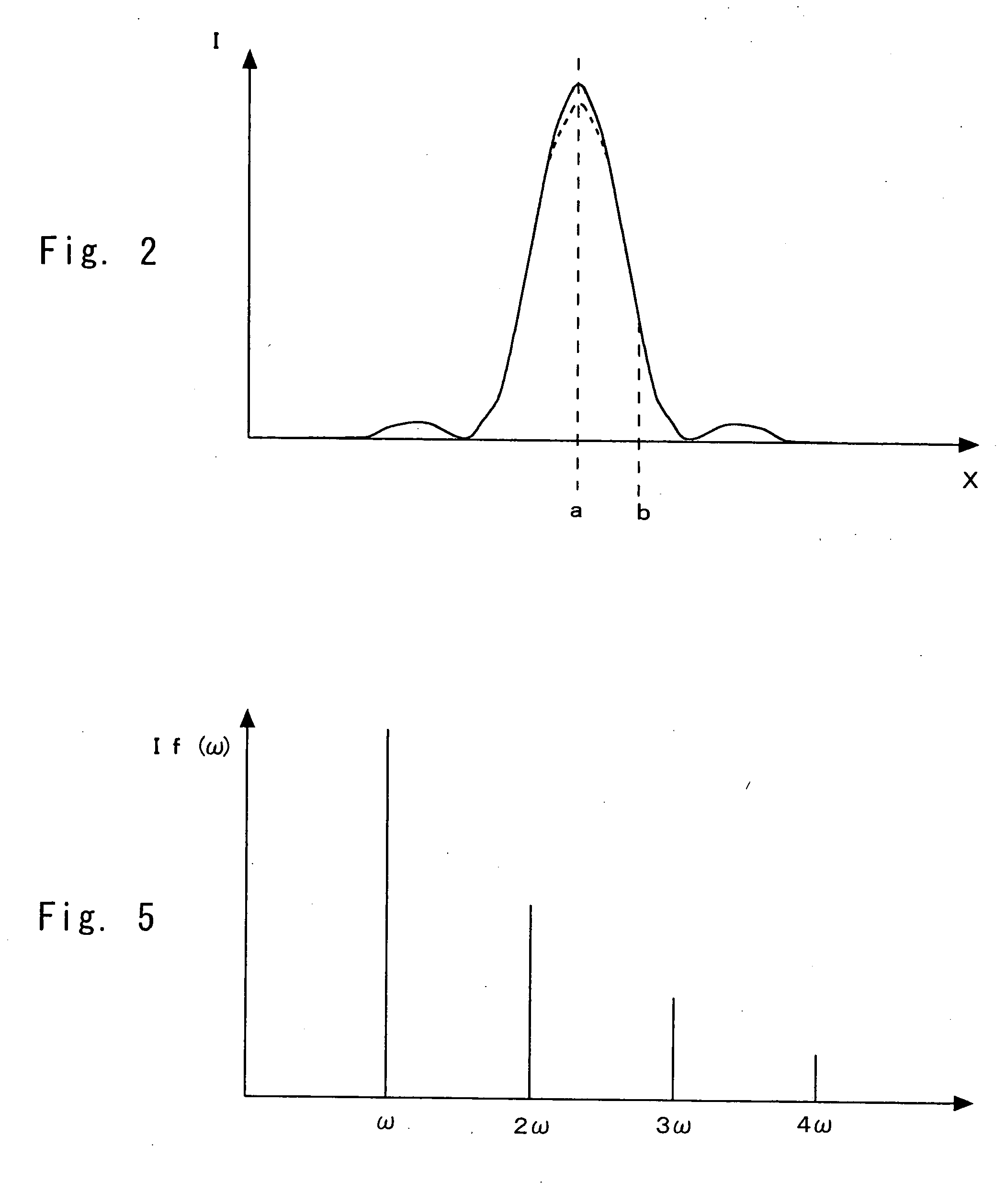Fluorescence Microscope and Fluorescence Microscope Method
- Summary
- Abstract
- Description
- Claims
- Application Information
AI Technical Summary
Benefits of technology
Problems solved by technology
Method used
Image
Examples
first embodiment
[0050]A fluorescence microscope according to a first embodiment of the present invention is a confocal microscope, in other words, a laser scanning type microscope. According to the present invention, spatial resolution is increased by utilizing saturation of fluorescence. That is, saturated components of fluorescence are observed to improve the spatial resolution. Referring to FIG. 1, the fluorescence microscope is described below. FIG. 1 schematically shows the structure of a fluorescence microscope of the present invention. Referring numeral 10 denotes a light source; 11, a lens; 12, a dichroic mirror; 13, a objective lens; 14, a sample; 15, a stage; 16, a modulator; 21, a pinhole; 22, a detector; 23, a lock-in amplifier; and 24, a processing apparatus.
[0051]The light source 10 is a laser light source for continuously emitting excitation light; for example, a continuous-wave Ar ion laser or a semiconductor ion laser having a wavelength in a visible range can be used. Here, the li...
second embodiment
[0083]A fluorescence microscope of this embodiment has the same structure as that of the first embodiment except that the light source 10 is a pulse laser light source. Target components are observed with two-photon excitation light in a similar fashion to the first embodiment to thereby increase spatial resolution. Incidentally, the same configuration as that of the first embodiment is omitted here.
[0084]As the light source 10, for example, a mode-locked titanium sapphire laser (wavelength of 750 nm, a pulse width of 100 fs, and repetition frequency of 80 MHz) is used. Further, the modulator 16 is used to perform intensity-modulation similar to the first embodiment. As the modulator, an electro-optical modulator (EO modulator) is used to perform modulation with 100 kHz. As described in the first embodiment, a repetition frequency of the pulse laser light is set much higher than the modulation frequency.
[0085]If two-photon excitation is used, photoexcitation itself is localized in a...
third embodiment
[0087]A fluorescence microscope of this embodiment applies laser beams of different intensities to observe a target site without modulating the laser light. The basic structure of the fluorescence microscope of this embodiment has the same structure as that of the fluorescence microscope of the first embodiment, so its description is omitted here. The fluorescence microscope of this embodiment is not provided with the modulator 16 in the fluorescence microscope of FIG. 1. Then, the sample 14 is irradiated with laser beams of different intensities from the light source 10. At this time, to irradiate the sample 14 with laser beams of different intensities, an output power of the light source 10 may be changed, or an intensity level of the laser light may be changed by using a filter such as an ND filter. Further, two or more light sources may be used. Further, these sources may be used in combination to change an intensity level of the laser light. Incidentally, laser beams of differe...
PUM
 Login to View More
Login to View More Abstract
Description
Claims
Application Information
 Login to View More
Login to View More - R&D
- Intellectual Property
- Life Sciences
- Materials
- Tech Scout
- Unparalleled Data Quality
- Higher Quality Content
- 60% Fewer Hallucinations
Browse by: Latest US Patents, China's latest patents, Technical Efficacy Thesaurus, Application Domain, Technology Topic, Popular Technical Reports.
© 2025 PatSnap. All rights reserved.Legal|Privacy policy|Modern Slavery Act Transparency Statement|Sitemap|About US| Contact US: help@patsnap.com



